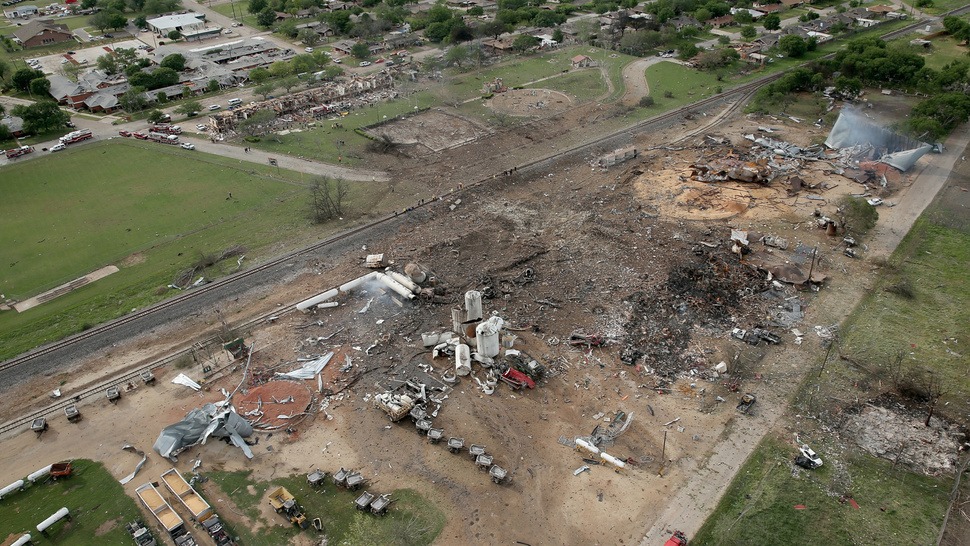(The aftermath of the explosion in West, Texas)
When we spoke at the Bullitt Foundation building in Seattle last fall, Denis Hayes sounded almost resentful of the Clinton and Obama administrations’ focus on health care.
“In my ideal world, I would have preferred that they address climate change, because there you are dealing with something that produces global change and where the world needs leadership from the United States,” Hayes said.
Hayes, who organized the first Earth Day and remains one of the country’s most innovative environmental leaders, was optimistic that Obama would use his second term to address climate change. He was particularly enthusiastic about the appointment of Gina McCarthy to direct the Environmental Protection Agency.
| The explosion in West, Texas, could have been prevented if the EPA had required fertilizer plants to “de-weaponize” ammonium nitrate by mixing it with calcium carbonate. |
What Hayes describe as “ideal” might be about to happen. While the president’s legislative agenda is impossible to navigate through John Boehner’s House, the Clean Air Act, bolstered by a 2007 Supreme Court ruling that the EPA can regulate greenhouse gases, allows the administration to write rules based on a law passed when LBJ was president.
Recently, Obama made several appointments that will make environmental regulation possible. His three new judges on the D.C. Court of Appeals have shifted the ideological balance of the forum where environmental regulations will be challenged. Obama also named John Podesta White House counselor, and announced that the former Clinton chief of staff will work on climate change.
McCarthy is currently presiding over the drafting of EPA rules that will regulate carbon emission—and are expected to impose tight restrictions on 600 coal-fired power plants already operating. Yet there is a critical issue that can be resolved by the stroke of her pen: an EPA “finding” that would require chemical plants to install “inherently safer technology,” reduce the volume of hazardous substances stored on site, and substitute less hazardous chemicals for substances that put workers and fence-community residents at risk.
(The ammonium nitrate explosion in West, Texas, which killed 15 and injured 200, could have been prevented if the EPA had required fertilizer plants to “de-weaponize” ammonium nitrate by mixing it with calcium carbonate.)
Last year, the Center for American Progress, which was founded by Podesta, released a report documenting risks at 101 of the nation’s most dangerous plants, risks that could be mitigated by an EPA finding.
McCarthy won’t make such a decision without the president’s support. And the president’s support would be a first step in addressing critical environmental concerns put on hold while health care exhausted much of the administration’s political capital.
Lou Dubose is the editor of The Washington Spectator.







0 Comments